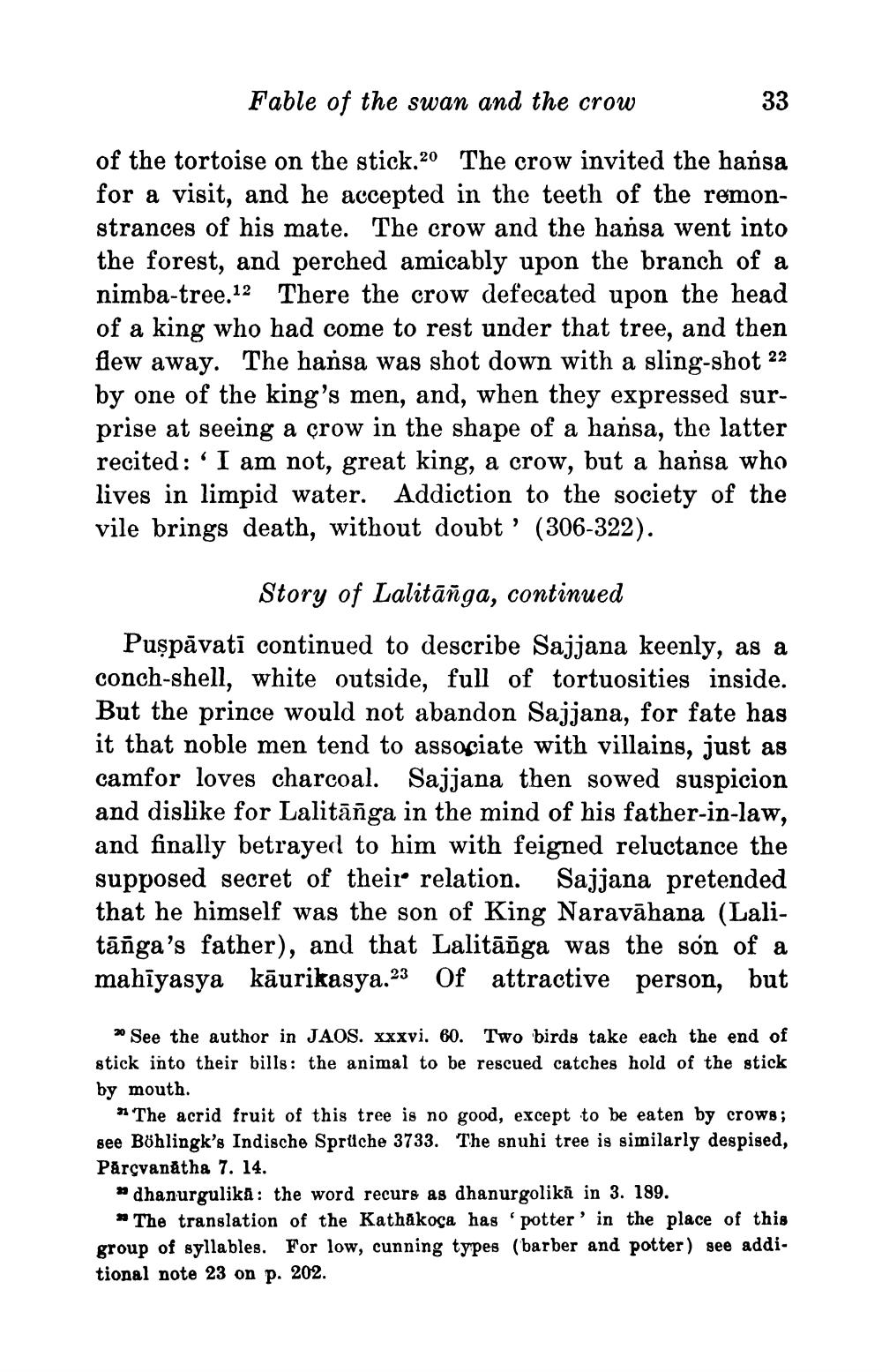________________
Fable of the swan and the crow
of the tortoise on the stick.20 The crow invited the hansa for a visit, and he accepted in the teeth of the remonstrances of his mate. The crow and the hansa went into the forest, and perched amicably upon the branch of a nimba-tree.12 There the crow defecated upon the head of a king who had come to rest under that tree, and then flew away. The hansa was shot down with a sling-shot 22 by one of the king's men, and, when they expressed surprise at seeing a crow in the shape of a hansa, the latter recited: I am not, great king, a crow, but a hansa who lives in limpid water. Addiction to the society of the vile brings death, without doubt' (306-322).
6
33
Story of Lalitanga, continued
Puspavati continued to describe Sajjana keenly, as a conch-shell, white outside, full of tortuosities inside. But the prince would not abandon Sajjana, for fate has it that noble men tend to associate with villains, just as camfor loves charcoal. Sajjana then sowed suspicion and dislike for Lalitāñga in the mind of his father-in-law, and finally betrayed to him with feigned reluctance the supposed secret of their relation. Sajjana pretended that he himself was the son of King Naravāhana (Lalitānga's father), and that Lalitāñga was the son of a mahīyasya kāurikasya.23 Of attractive person, but
20 See the author in JAOS. xxxvi. 60. Two birds take each the end of stick into their bills: the animal to be rescued catches hold of the stick by mouth.
The acrid fruit of this tree is no good, except to be eaten by crows; see Böhlingk's Indische Sprüche 3733. The snuhi tree is similarly despised, Parçvanatha 7. 14.
"dhanurgulika: the word recurs as dhanurgolika in 3. 189.
"The translation of the Kathakoça has potter' in the place of this group of syllables. For low, cunning types (barber and potter) see additional note 23 on p. 202.




